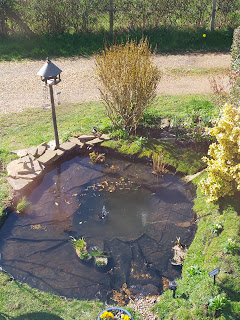A weekend of meeting people in Busan
The programme of the Assembly changed for Saturday and Sunday with some visiting Seoul which included staying in local homes, visiting local churches on the Sunday morning including a mega church with 70,000 members and 2,000 Sunday school teachers and a visit to the North - South border zone. I opted to stay in Busan and spent Saturday on a 'spiritual plurality' visit to a number of sites. The first of these was a Won Buddhist centre. Won Buddhism is unique to Korea and was developed only 100 years ago. The most obvious distinctive characteristic is a lack of any images of the Buddha, these being substituted by a simple gold circle to represent the essence of being human.
We then visited a Confucianism school at which we were repeatedly told that they did not worship any god. Not only young people are taught here but leaders of business and politics too.
We were then somewhat hijacked on the way to lunch into a museum to the history of Korean Christianity which has been set up by one of the churches and after being shown this we had lunch in a very traditional Korean restaurant in which we sat on cushions on the floor at low tables.
The visit to a Mosque was interesting, not least because it has a Korean Imam who became Muslim about 30 years ago. His congregation is made up primarily of migrant workers, both Sunni and Shia although the Shias keep themselves apart and come from a different more managerial class.
The final visit was to the main Buddhist temple in the hills which is a complex of Buddha houses. A group of young people spending some time were there for what looked like an introduction to Buddhism. We stayed for the evening ritual which began with the beating of a huge suspended drum. Drumming is clearly part of Korean culture as it is in Japanese too as we sometimes see through groups such as Yamato.
On Sunday we were split up into small numbered groups to visit various churches. I attended a Presbyterian Church of the PCK which in many ways was familair but had some interesting differences. The second service which was led by a youth worship band ended with three performances. A traditional setting of Amazing Grace was danced to by a group of girls with fans, a taekwondo group danced rather controversially it seemed to me with kicks and punches and finally a girl performed a particularly beautiful flowing individual dance.
Exposure to the Korean Church for the first time inevitably leads to a lot of reflection especially given the obvious level of borrowing of western songs and images of Jesus that we by and large stopped using a long time ago! In the sessions and discussions of the Assembly and in one of the Bible studies I attended there has been an emphasis on not colonising other cultures with the gospel but allowing them to develop their own inculturation of the good news. I cannot help but wonder whether and to what degree that has happened in Korea. By contrast, the development of Won Buddhism which took the essentials of Buddhism but rejected the use of images and replaced it with a circle representing aspects of the teaching of the Buddha that seemed particularly appropriate to Korea, seems like a better model.
That is all based on a very brief snapshot of the Korean church of course and as such open to criticism; nevertheless it has made me think.




